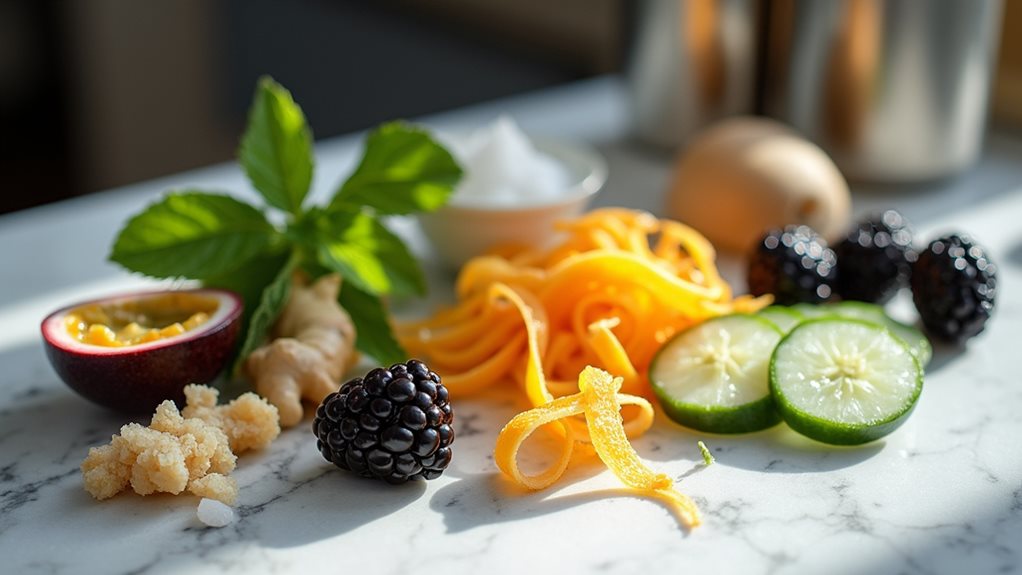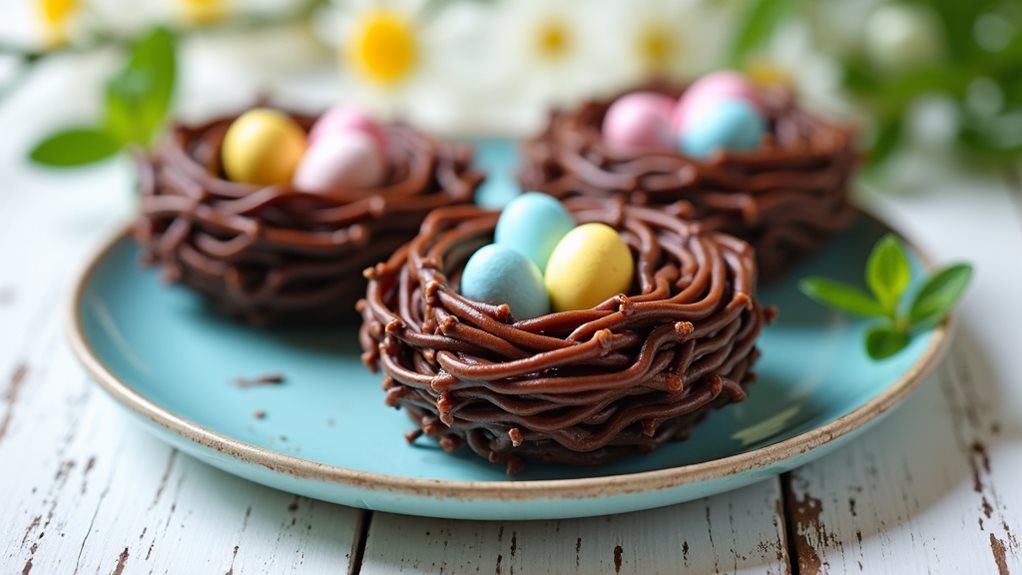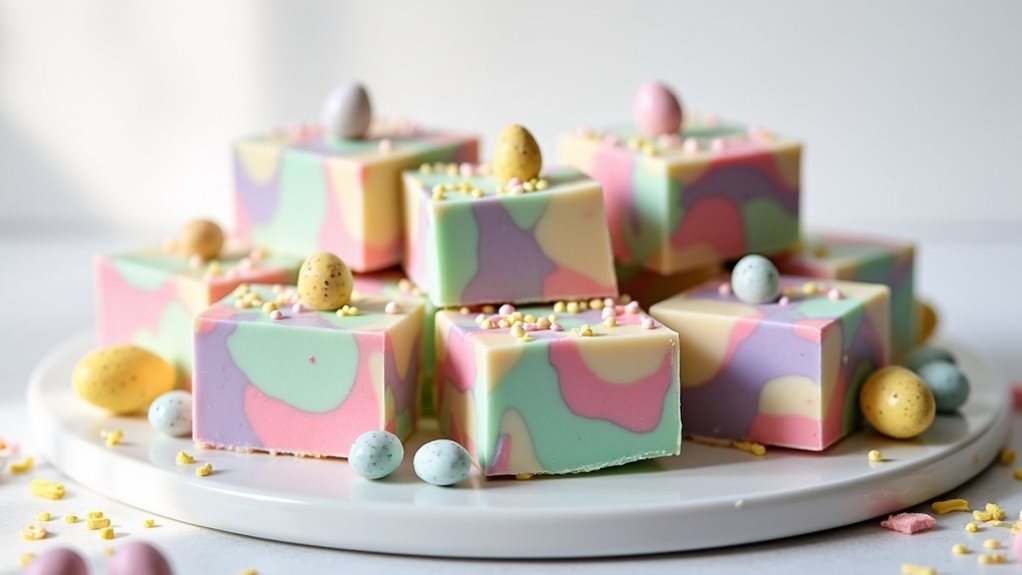When creating cocktails, you'll achieve balanced flavors by following the 2:1 sweet-to-sour ratio. Pair complementary ingredients like strawberries with lime or cucumber with mint for invigorating combinations. Consider seasonal produce for vibrant drinks—apples and cinnamon in fall, floral notes in spring. Experiment with herbal infusions to enhance base spirits, and don't overlook presentation elements like citrus garnishes that add both aroma and visual appeal. The perfect pairing transforms an ordinary drink into a memorable sensory experience.
The Art of Balancing Sweet and Sour in Fruit-Forward Mixology
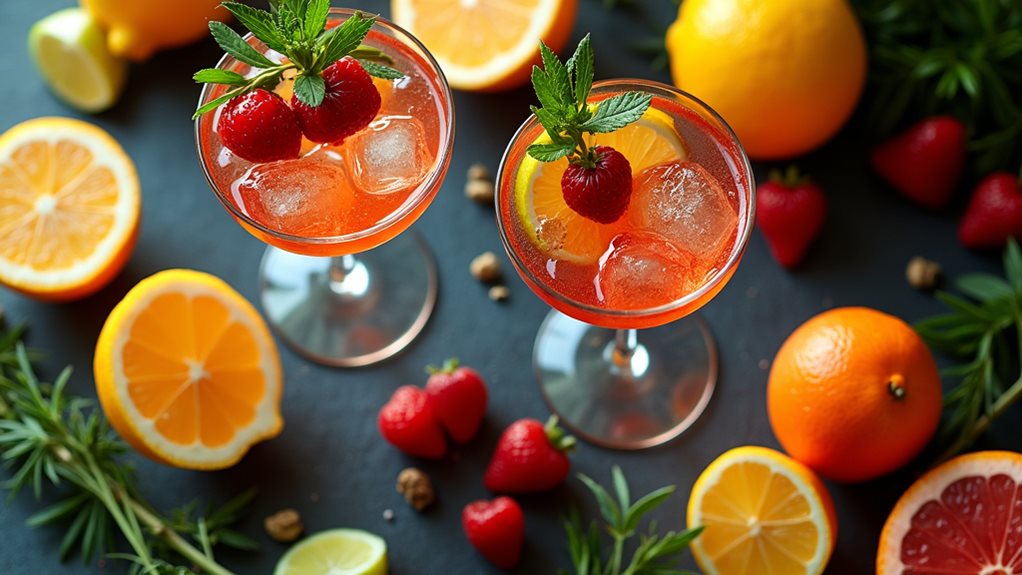
While mixology may seem like a mysterious art form, mastering the balance between sweet and sour flavors forms the foundation of any successful fruit-forward cocktail. Start with a basic 2:1 ratio of sweet to sour, then adjust according to your taste preferences.
Balancing sweetness and acidity unlocks the secret language of cocktails—start with 2:1 and let your palate guide you.
When exploring sweet ingredient alternatives, don't limit yourself to simple syrup—try honey, agave nectar, or maple syrup to add depth and complexity. Our product's simple syrup component provides just the right sweetness when creating balanced cocktails at home.
For sour ingredient variations, freshly squeezed citrus juices deliver superior results compared to bottled options. Mix lemon and lime juice for layered acidity, or incorporate grapefruit for a bitter-sour dimension. Consider adding citrus-flavored liqueurs as sweetening ingredients that can eliminate the need for additional sweeteners.
The key is experimentation—combine strawberries with lime in a daiquiri or blend pineapple with coconut cream in a Blue Hawaiian for truly innovative results.
Herbal Infusions: Elevating Your Cocktail Experience
Beyond the sweet and sour foundation of cocktails lies a fascinating world of herbal infusions that can transform ordinary drinks into extraordinary sensory experiences.
You'll discover that various infusion techniques reveal different dimensions of flavor profiles—from hot steeping that quickly releases essential oils to cold infusion that preserves delicate notes over time.
Try pairing vodka with cucumber-mint for revitalizing summer drinks, or enhance gin's botanicals with rosemary-thyme combinations.
Create custom infusions by experimenting with seasonal herbs, balancing floral elements like rose with earthy components such as thyme.
Consider creative applications like herbal ice cubes that gradually release flavor as they melt, or elevate classics by adding lemongrass-ginger infusions to rum cocktails. Freezing infusions like Jekkas Summer Garden creates pink ice cubes that add both visual appeal and flavor to your cocktail creations.
The most memorable drinks often come from thoughtful herb selection that complements rather than overwhelms your base spirit.
Understanding complementary flavor connections is essential when designing cocktails with herbal elements, just as it is in culinary practices.
Seasonal Inspirations for Year-Round Signature Drinks
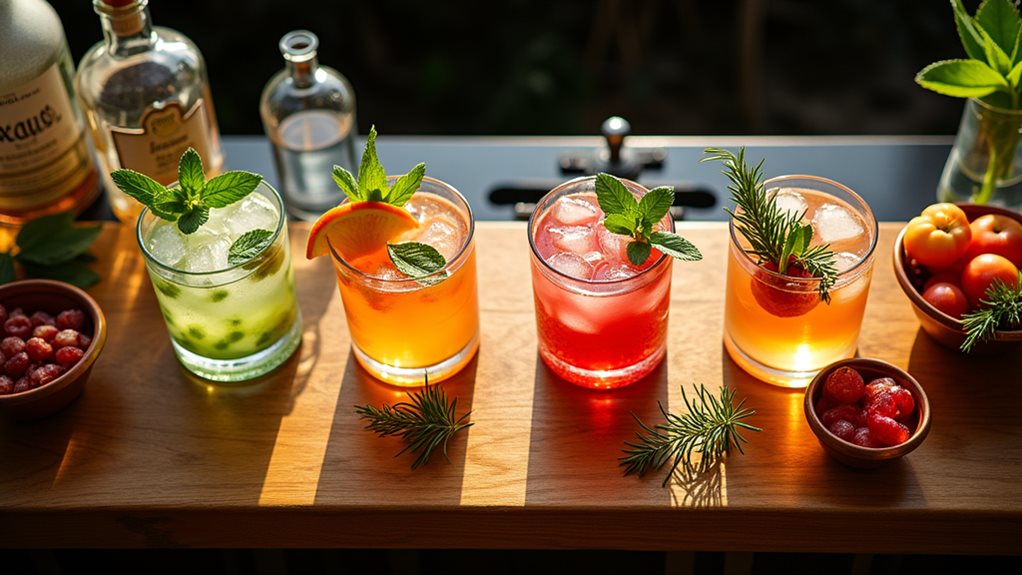
Throughout the changing seasons, cocktail enthusiasts can discover an endless palette of flavors that evolve with the calendar.
By embracing seasonal ingredient sourcing, you'll create more authentic and vibrant cocktails while supporting sustainability efforts in your mixology practice. Fresh harvested herbs can significantly enhance both the flavor profile and aromatic qualities of your signature drinks.
- Summer to Fall Shift – Replace berry-forward drinks with apple and cinnamon combinations, maintaining freshness while introducing warming elements.
- Winter Comfort – Incorporate cranberry and thyme with traditional spirits for sophisticated cold-weather offerings.
- Spring Awakening – Experiment with floral notes like lavender paired with bright citrus to signal seasonal renewal.
- Year-Round Versatility – Create signature tropical flavor combinations using mango and citrus that transcend seasonal limitations when local produce isn't available. The dynamic contrast of apple cinnamon & jalapeno creates an exciting flavor profile that works exceptionally well in specialty cocktails throughout the year.
Your signature cocktails can reflect nature's rhythm while offering innovative flavor experiences regardless of the calendar date. For a sophisticated twist on classic recipes, consider incorporating pure maple syrup as a natural sweetener that pairs exceptionally well with bourbon and fresh citrus.
Complex Flavor Layering: Beyond the Basics
When you elevate your cocktail game from simple mixes to complex layered creations, you're entering a domain where chemistry meets artistry. Understanding density rules is fundamental—heavier liquids must form the foundation while lighter components float above.
Master layering techniques using bar spoons or syringes to maintain distinct separation between elements. Begin by pouring the heaviest spirit first to create a stable base for your layered cocktail. Your goal isn't just visual impact but a multisensory journey. Remember that 80% of flavor perception comes from aroma, so volatile compounds play an essential role in your cocktail's experience. Using flavor pairing theory, you can select ingredients that share common flavor compounds for more harmonious combinations.
Orchestrate your layers not merely for the eye, but for the complex dance of aroma and taste that unfolds with each sip.
Consider how each layer will interact as they gradually blend during consumption—balancing sweet, sour, bitter, salty, and umami notes. Try unexpected combinations like herb-infused syrups or spicy vodka infusions to create depth that surprises and delights.
Start simple, then build complexity as your confidence grows.
Citrus Magic: Transforming Classic Spirits
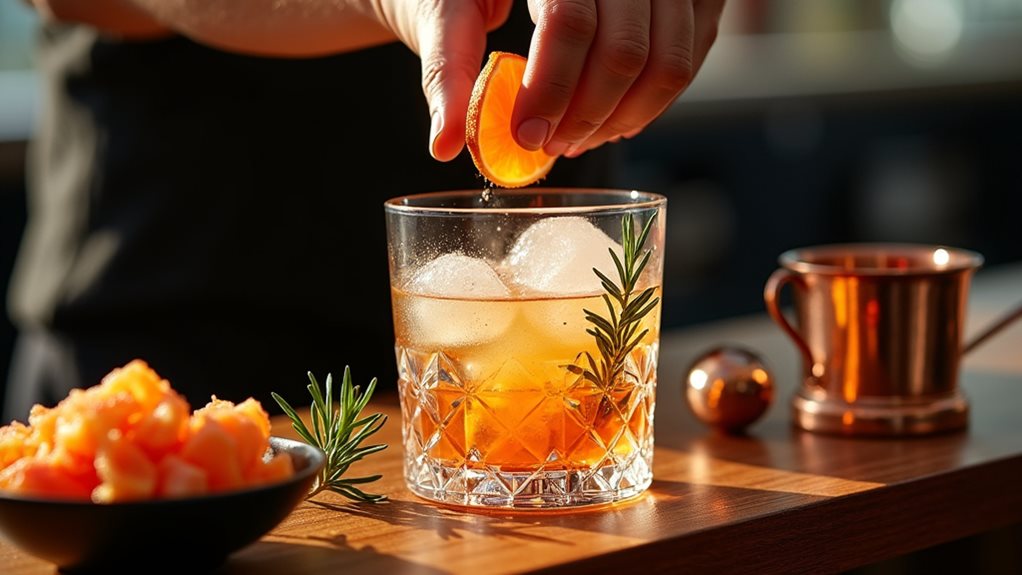
Citrus fruits serve as the bartender's secret weapon, capable of transforming ordinary spirits into extraordinary cocktails through their perfect balance of acidity and aromatic complexity.
When exploring various citrus varieties, you'll discover how each uniquely enhances classic spirits by cutting through sweetness and adding bright, invigorating notes. The essential oils in freshly squeezed juice and zest contribute significantly to the depth and complexity of well-crafted cocktails. Darling Cara Cara oranges create vibrant and refreshing cocktails with their pink-hued juice that provides a sweet flavor burst. Similar to cranberry orange relish, the combination of zesty citrus with other flavors creates a harmonious blend that excites the palate while providing familiar comfort.
- Pair tequila with orange in a Light Paloma for a smoother alternative to traditional grapefruit.
- Balance whiskey's harsh edges with lemon juice, creating the perfect Whiskey Sour.
- Enhance gin's botanical profile with lime, letting the citrus amplify its natural flavors.
- Combine rum with fresh lime juice to create the ideal sweet-tart balance in a Mojito.
Experiment with cocktail garnishes like blood orange wheels, yuzu twists, or grapefruit zest to add aromatic oils that elevate your drink's sensory experience.
Frequently Asked Questions
How Do Dairy Alternatives Affect Traditional Cocktail Flavor Profiles?
You'll find dairy alternatives transform traditional cocktails through subtle flavor enhancement. They'll introduce nutty, tropical, or creamy notes while maintaining the drink's essence—oat milk adds sweetness, while coconut brings tropical depth to your creations.
Can Non-Alcoholic Ingredients Substitute Spirits While Maintaining Flavor Combinations?
With 71% of consumers seeking healthier options, you can absolutely maintain complex flavor profiles using non-alcoholic alternatives. Try herb infusions like rosemary or basil and concentrated fruit reductions to replicate spirits' depth and complexity in your innovative concoctions.
What Cocktail Flavor Pairings Work Best for Dietary Restrictions?
For dietary restrictions, you'll find success using dietary swaps like agave for honey in vegan drinks or gluten-free spirits for celiac needs. Focus on maintaining flavor balance with fresh herbs and citrus for innovative results.
How Does Glassware Selection Impact Flavor Perception in Cocktails?
Glass shape directly influences how you'll experience cocktails. You're tasting more than ingredients—the right glassware creates aroma enhancement, directing vapors to your nose and transforming how flavors hit your palate with each sip.
Which Flavor Combinations Help Mask the Taste of Stronger Spirits?
You'll find fruit juices like citrus and berry effectively mask strong spirits, while herbal infusions add complexity that diverts attention. Sweet-sour combinations and aromatic additions like cinnamon or rosemary create innovative balance in potent drinks.
Final Thoughts
You're now equipped to craft cocktails that will absolutely blow your guests' minds. Remember, balance is your foundation, but imagination is your superpower. Whether you're working with seasonal fruits, experimenting with herbs, or layering complex flavors, trust your palate to guide you. Don't be afraid to break rules occasionally—the most memorable drinks often come from unexpected pairings. Your journey into flavor exploration has only just begun.

